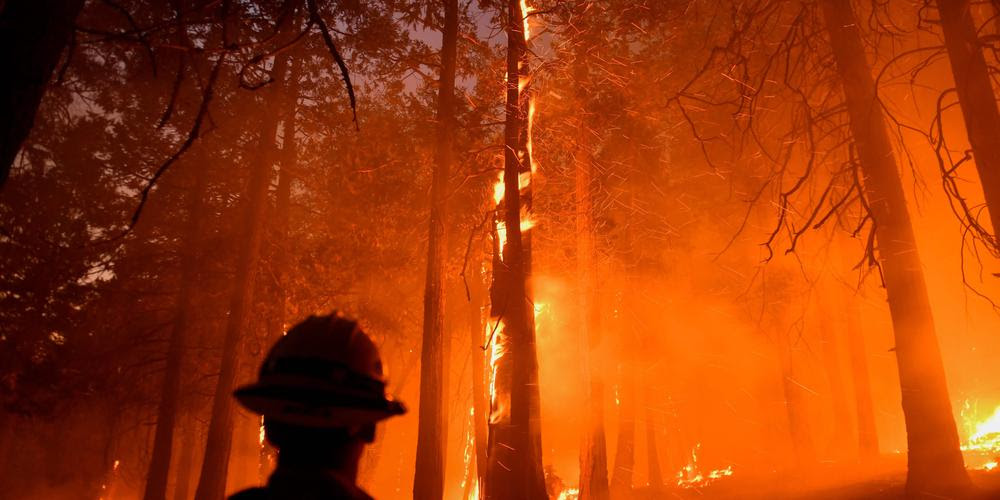Firefighters were fighting a raging wildfire Monday, July 11, that threatens the iconic giant sequoia trees in Northern California’s prestigious Yosemite Park.
The declaration of this fire, Thursday for a reason still undetermined, reached the area of Mariposa Grove, the most prized of the park, because it contains hundreds of sequoias among the largest in the world, said the authorities.
Fortunately, however, these venerable trees have not been affected by the flames for now.
Initially considered out of control, the forest fire was contained to 25% Monday afternoon, July 11, after having covered some 950 hectares of vegetation, according to the latest assessment.
And as is often the case, the weather is not helping: the weather is expected to remain hot and dry for the next few days.
“We’re doing everything we can to put it out, we’re using air resources, air tankers and helicopters” in addition to ground crews, assured Nancy Phillipe, a spokeswoman in charge of fire information in Yosemite.
More than 500 firefighters are now battling the blaze.
This burning part u park Yosemite has suffered in the past and was largely redeveloped and reopened in 2018.
Yosemite Park, prized by climbing fans for its majestic cliffs, is one of the best-known large American parks in the world.
The small village of Wawona, home to several hotels catering to the many tourists who come to admire its mountainous landscapes and famous waterfalls, has been under evacuation orders for several days.
A team is preparing the “Grizzly Giant” – the park’s most famous and spectacular giant sequoia – for the approaching flames by constantly watering it.
“At 209 feet (64 m) tall, it is the second tallest in Yosemite,” the park says, broadcasting the measures taken to protect it on social media.
These precautionary measures, combined with voluntary fire starts made to prepare the park, ensure “the best possible protection for the trees,” said Nancy Phillipe.
This ancestral practice by the Native American tribes of the region, which consists of directing fires and are intended to clear the undergrowth by consuming brush and dead trunks that have fallen to the ground, all of which can fuel the intensity of forest fires.
Low-intensity fires are generally not enough to harm giant sequoias, which are naturally adapted to these disasters with their very thick bark and first branches that can grow up to thirty meters high, beyond the reach of flames.
On the contrary, these redwoods need fires to reproduce: the heat of the flames causes the cones that have fallen to the ground to burst like popcorn and release hundreds of seeds.
These giant trees, which grow only in California, are not adapted to the more intense fires that have tended to break out in recent years due to climate change.
In September 2021, as fires burned through the region’s forests, rescue workers wrapped giant redwoods, including the 83-meter tall “General Sherman,” considered the world’s largest tree, in fireproof blankets.
The Californian territory, in the grip of a chronic drought which reached records this year, is undergoing a heat wave.
The American West has already experienced forest fires of exceptional size and intensity in recent years, with a very clear extension of the fire season.
“It’s only the beginning of July,” recalled Nancy Phillipe. “Every year we say to ourselves +whew, it’s going to be a long (fire) season+, and seasons are getting longer and longer.”



Comment here